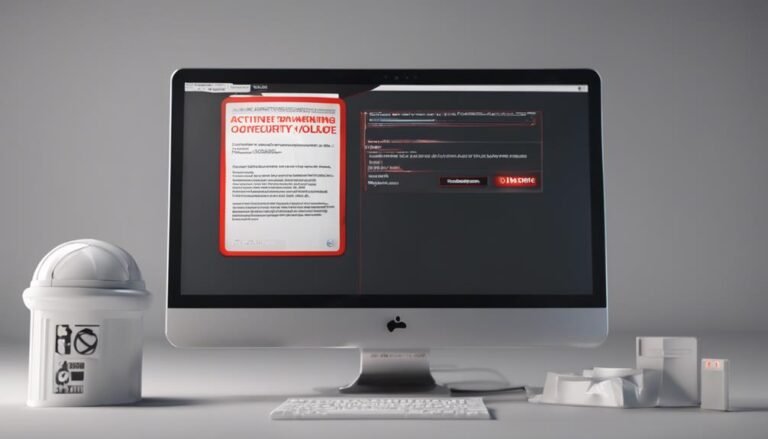Audit Risk Model: Explanation of Risk Assesment
In the domain of auditing, the audit risk model serves as a cornerstone for ensuring the reliability and accuracy of financial statements. Through meticulous risk assessment, auditors evaluate the potential impacts and likelihood of risks, tailoring their procedures to address these factors effectively. By understanding the intricacies of risk assessment and its application in the audit process, auditors can provide stakeholders with a robust foundation for decision-making and assurance. However, the nuances of risk assessment go beyond surface-level evaluations, prompting a deeper exploration into the complexities and implications of this critical aspect of auditing.
Key Takeaways
- Risk assessment evaluates likelihood and impact of risks on financial statements.
- Audit procedures align with risk factors for thorough assessment.
- Control measures manage risks by ensuring accuracy of financial information.
- Components of risk assessment enhance reliability of audit process.
- Unqualified opinion indicates financial statements are free from material misstatements.
Overview of Audit Risk Model
The audit risk model serves as a structured framework that aids auditors in identifying, analyzing, and responding to potential risks during the audit process. Risk evaluation is a critical component of this model, requiring auditors to assess the likelihood and impact of various risks on the financial statements.
Control measures play a key role in managing these risks effectively. Auditors must consider the internal controls implemented by the company to mitigate risks and guarantee the accuracy of the financial information. By evaluating the control measures in place, auditors can determine the extent to which they can rely on the internal controls to reduce audit risk.
This systematic approach enhances the quality and reliability of the audit process.
Components of Audit Risk Assessment
Analytically dissecting the various components of audit risk assessment reveals a meticulous process essential for ensuring the integrity and accuracy of financial statements. Risk factors play an important role in this assessment, encompassing elements such as industry volatility, complexity of transactions, and management integrity.
Audit procedures are meticulously designed to address these risk factors, including the examination of internal controls, substantive testing of transactions, and analytical review of financial data. By carefully aligning audit procedures with identified risk factors, auditors can effectively evaluate the likelihood of material misstatements in the financial statements.
This thorough approach to risk assessment forms the foundation for a detailed and reliable audit, providing assurance to stakeholders regarding the credibility of the reported financial information.
Importance of Unqualified Opinion
Moving from the components of audit risk assessment to the current subtopic of the importance of an unqualified opinion highlights the critical role played by a favorable audit outcome in reinforcing stakeholder confidence and financial statement credibility.
An unqualified opinion, also known as a clean opinion, signifies that the financial statements are free from material misstatements and comply with accounting standards. This type of opinion enhances credibility by providing assurance to investors and stakeholders that the information presented is reliable.
Investor confidence is bolstered when an unqualified opinion is issued, indicating that the company's financial reporting is transparent and trustworthy. Ultimately, the significance of an unqualified opinion lies in its ability to strengthen the integrity of financial statements, instilling trust in the organization's performance.
Application of Audit Risk Model
By what means can the Audit Risk Model be effectively applied to enhance the accuracy and reliability of financial audits?
The practical application of the Audit Risk Model involves a systematic approach to identifying and evaluating risks, analyzing their potential impact on financial statements, and implementing appropriate risk mitigation strategies.
By utilizing this model, auditors can prioritize their efforts towards areas with higher inherent risks, thereby increasing the effectiveness and efficiency of the audit process.
Through risk mitigation techniques such as enhanced substantive testing, increased sample sizes, and closer scrutiny of complex transactions, auditors can provide greater assurance regarding the accuracy and reliability of financial information.
Benefits of Risk Assessment in Auditing
The assessment of risks in auditing provides essential insights into potential vulnerabilities that may impact the accuracy and reliability of financial statements. By conducting risk assessments, auditors can identify areas where errors or fraud are more likely to occur, allowing them to focus their resources on these high-risk areas. This targeted approach enhances the credibility of the audit process by increasing the likelihood of detecting material misstatements.
Additionally, risk assessment in auditing plays a significant role in building stakeholder confidence. When stakeholders are assured that thorough risk assessments have been conducted, they are more likely to trust the financial statements and the overall audit process, leading to increased confidence in the organization's financial reporting.
Conclusion
To sum up, the audit risk model is an essential framework for auditors to identify, assess, and respond to risks during the audit process.
By aligning audit procedures with risk factors, auditors can enhance the quality and reliability of the audit, ensuring the integrity and accuracy of financial information.
One interesting statistic to note is that a study found that 85% of audit failures are due to inadequate risk assessment, highlighting the importance of thorough risk assessment in auditing processes.







